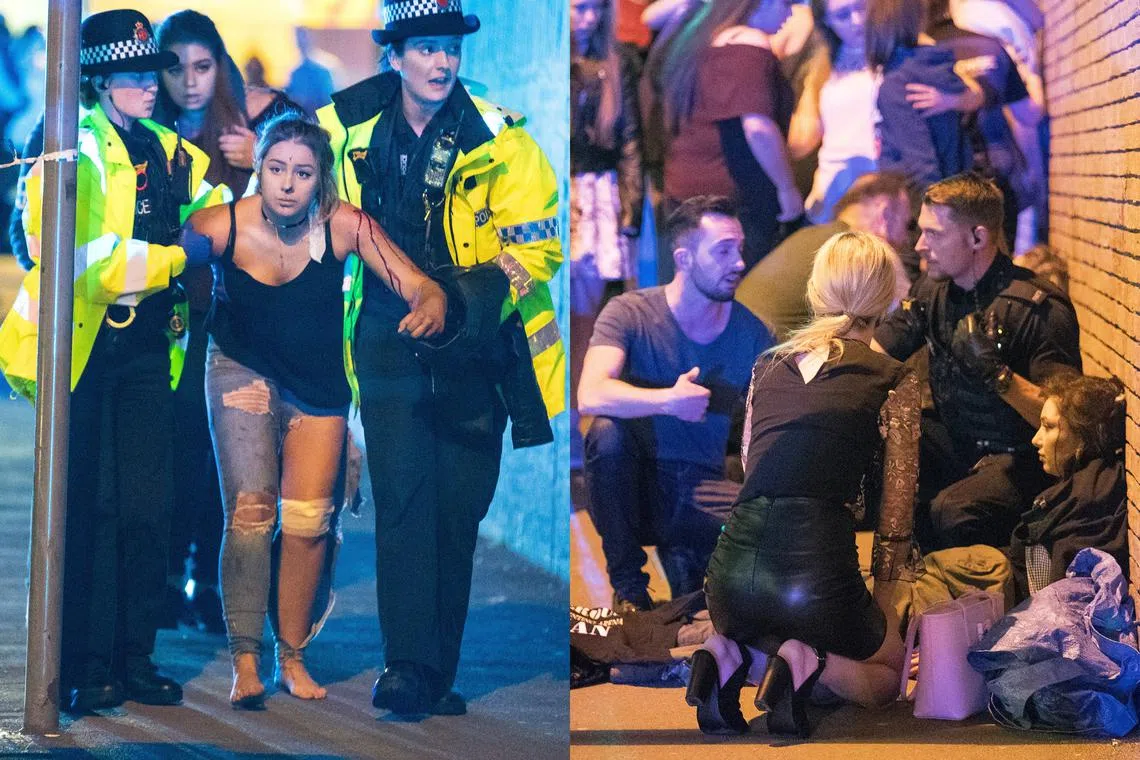Report on 2017 Manchester terror attack finds 'fatal' errors
Sign up now: Get ST's newsletters delivered to your inbox

A suicide bomber targeted people attending an Ariana Grande concert in Manchester in 2017.
PHOTOS: JOEL GOODMAN/LNP
Follow topic:
LONDON - A report on Thursday strongly criticised the emergency response to a 2017 terror attack in Manchester, saying that with better care, at least one of the 22 victims would have survived.
A suicide bomber targeted people attending an Ariana Grande concert
Mr John Saunders, a retired judge leading the public inquiry, on Thursday presented the second part of his damning report.
He said he was “highly critical of many aspects of the rescue operation” and aimed to stop the same mistakes being repeated.
Prime Minister Rishi Sunak responded with a tweet offering his “solemn commitment to the victims, survivors and their loved ones that we will learn from the lessons of the inquiry”.
The report condemned a lack of coordination between emergency services and police, with paramedics located nearby unable to treat victims because police were slow to declare the area safe.
“That would have resulted in a much swifter treatment and swifter and more appropriate evacuation of casualties,” Mr Saunders said.
He recalled “heartbreaking evidence of the injured and the rescuers”.
“Hearing the sirens of ambulances, knowing paramedics were close by, expecting their imminent arrival, only for them not to arrive in the sort of numbers which were needed.”
Mr Saunders said a programme to improve coordination between police and emergency services, introduced after the July 2005 bombings in London, “failed almost completely”.
Greater Manchester Police’s Chief Constable Stephen Watson acknowledged in a statement that the force’s “combined failings were significant”.
The distressing report focuses on one of the victims, 28-year-old John Atkinson, who did not receive qualified medical care for severe leg wounds for almost an hour after the attack and died after going into cardiac arrest.
Initially treated by a member of the public with a makeshift tourniquet, Mr Atkinson lay conscious and in severe pain and was eventually carried by police and members of the public to an area where paramedics were working, 52 minutes after the bombing.
Not knowing that nearby ambulances had stretchers, they carried him on an advertising board and a metal barrier.
“Some of what went wrong had serious, and in the case of John Atkinson, fatal consequences,” the report said.
Mr Saunders said he accepted expert opinion that Mr Atkinson “would have survived if given prompt and expert medical treatment”.
Mr Saunders said he would meet interior minister Suella Braverman over the report.
She posted on Twitter: “I will carefully consider the recommendations made so far to strengthen our response.” AFP

